Image above: Cindy Clancey and her father exploring an abandoned and half-buried building on Sable Island.
In the early 1960s my father, Sid Forward, was employed as an electrician on Sable Island. He was responsible for maintaining the lights and diesel power station. My mother, Doris, and I accompanied him. We lived at the West Light in what is now the “Fisheries and Oceans” house. We resided there from the spring of 1961 to the summer of 1963. After we returned to Halifax my father continued to service the lights through the Department of Transport.
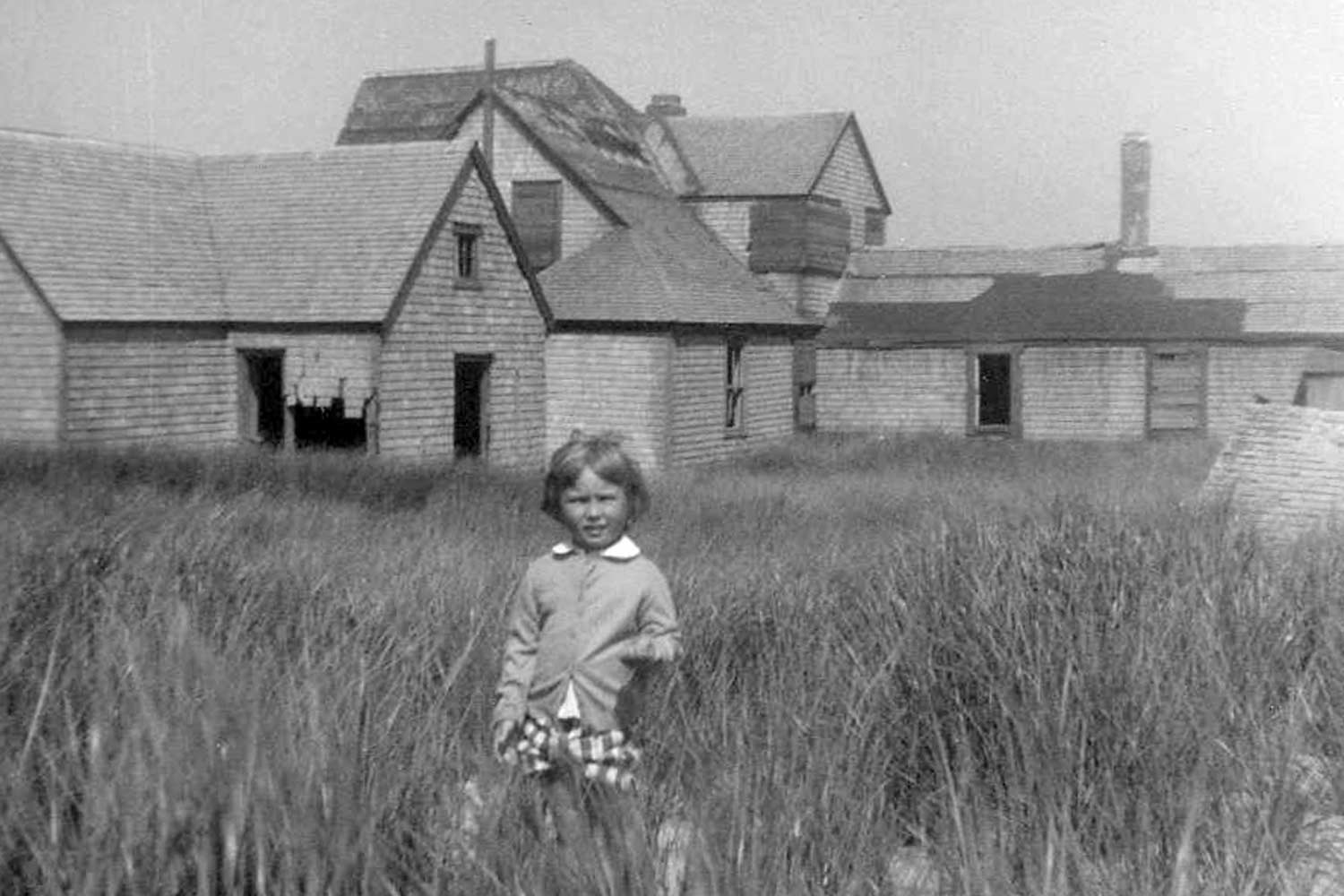 Four-year old Cindy Clancey standing near the ruins of buildings at the old Main Station Sable Island. This photograph is one of a collection of photos taken by her father, Sid Forward, during the family’s two-and-a-half years on the island.
Four-year old Cindy Clancey standing near the ruins of buildings at the old Main Station Sable Island. This photograph is one of a collection of photos taken by her father, Sid Forward, during the family’s two-and-a-half years on the island.
During our stay on Sable there were ten other permanent residents including weather people, a wireless operator and two other children. In spite of the island’s isolation, there was a steady stream of visitors. According to my parents’ photos, workmen, scientists, Mobil Oil representatives, National Geographic photographers and the occasional politician were enthusiastically greeted by the tiny community. We had many dinner guests.
Transportation to and from the island was primarily provided by the Coast Guard and the Department of Transport. We travelled on the Labrador and the Cornwallis. The latter vessel was the nicer. My parents once charted a small private plane to take us to the mainland for a vacation. Less elaborate trips usually involved noisy helicopter rides or getting soaked on a barge during ship to shore excursions.
Communication with the mainland was by radio. Aided by “Rube Hornstein,” relatives in Halifax could contact us via the weather station. Local calls on the island were made on crank telephones. The arrival of mail and catalogue orders from Eatons were special treats.
The supply boat arrived twice a year. It was quite an event. Everyone would go to the beach to help unload and watch the spectacle. Supplies and people would come ashore on board the barge and then be loaded on a cart pulled by the “Bombardier”. I have memories of a jeep that my father used, arriving in that fashion. There was also an incident in which a television was accidentally dropped overboard.
Supplies were stored in Quonset huts and we maintained a hen house for fresh eggs. I remember my father taking a wheel barrel to the Quonset hut to get groceries. Out of necessity my mother became an expert bread maker and a very creative cook. After the fresh produce was gone, there was only the frozen, canned and powdered.
Island residents provided their own entertainment, especially in the winter when we lost all television reception. Musical skills were a valued commodity. There were plenty of social gatherings to pass the time. Walking, observing wildlife and beachcombing were daily rituals. As a child I fondly remember dodging “terns” as we walked, and spying on baby birds, seals and horses. There was always something new to see, especially after a storm.
Eleanor and Fred Androschuk became good friends of my parents. Fred was the “CEO”. They lived at the weather station for several years. I once saw Eleanor’s name mentioned in a book called A Dune Adrift. The book made reference to a scallop shell that Eleanor donated to the Philadelphia Academy of Natural Sciences museum. Shell collecting was a hobby that we all enjoyed. Our relatives on the mainland were the usual recipients of our beach treasures. I’m pleased that Eleanor took beachcombing more seriously.
There was another family who lived at the West End. The family surname escapes my memory. However they had two children, Cathy and Johnny. They were my friends. Sable was a wonderful adventure for a child. We lived in a huge sandbox with dunes to roll down and horses to ride. We were surrounded by amazing wildlife and even got to “check out” the occasional helicopter or airplane. However, our parents had to supervise us closely as medical emergencies were a serious matter. Ironically during our stay on the island, it was an adult who had to be airlifted to Halifax after suffering a medical incident.
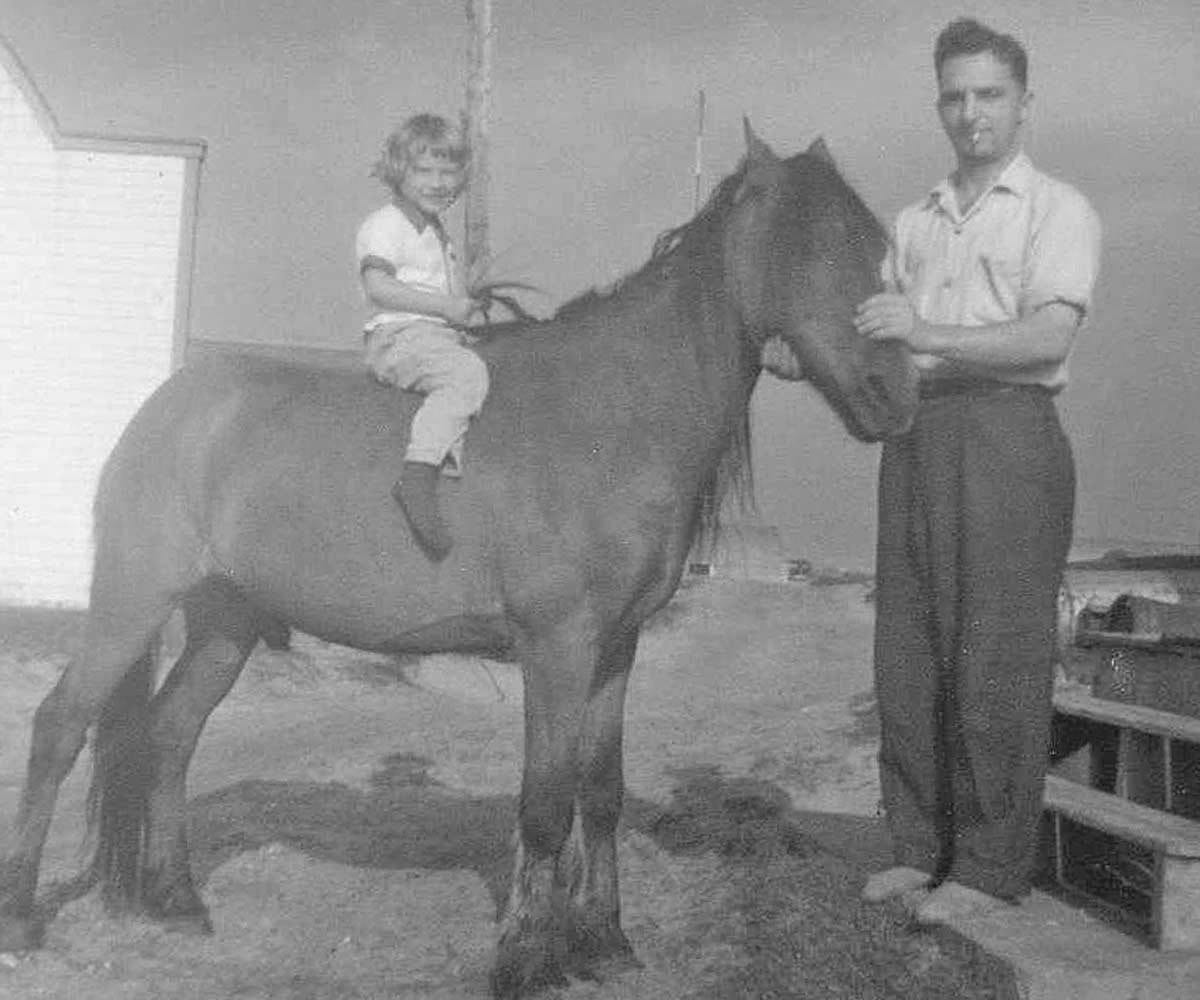 Cindy, her father, and a friendly Sable Island horse.
Cindy, her father, and a friendly Sable Island horse.
As for the horses, there were some that were reasonably domesticated. I recall some of their names: Flash; Lightening; Star; Lady; and April (a colt born in the spring before we left). These horses were actually used for transportation and provided many hours of entertainment as they roamed freely. With the exception of the barn, there were no fences around the buildings at the West End. It was quite common to see horses “hanging around”. We would often leave a bucket of water on the step. There was one herd of “wild” horses that was fairly tame. They would huddle around the buildings during storms and were usually not too far from sight.
A lot of artifacts were still on the island when we were there. We were very fortunate to witness an archeological excavation and the detonation of a WWII bomb! The old “Main Station” was in ruins but still standing as was the “East Light keeper’s house”. What a privilege it was for us to see and explore the actual remnants of the “Lifesaving Station”. It is strange for me to see more recent pictures of these structures now covered by sand. Many of the buildings familiar to our Sable experience are now gone.
In some ways I suspect that life is quite different on Sable now. Although the need to maintain a human presence on the island is as important as ever, improvements in technology, communication and transportation have changed the activities and priorities of staff. Gone are the days when light keepers and their families made Sable their home.
My family’s connection to Sable seems surreal. It is now limited to pictures and stories as both of my parents have since passed away. Although I was very young and have limited personal memories of the experience, the stories have been preserved through photos and home movies. I thought that someday such images might be of interest as our maritime “light keeping” heritage fades into history.
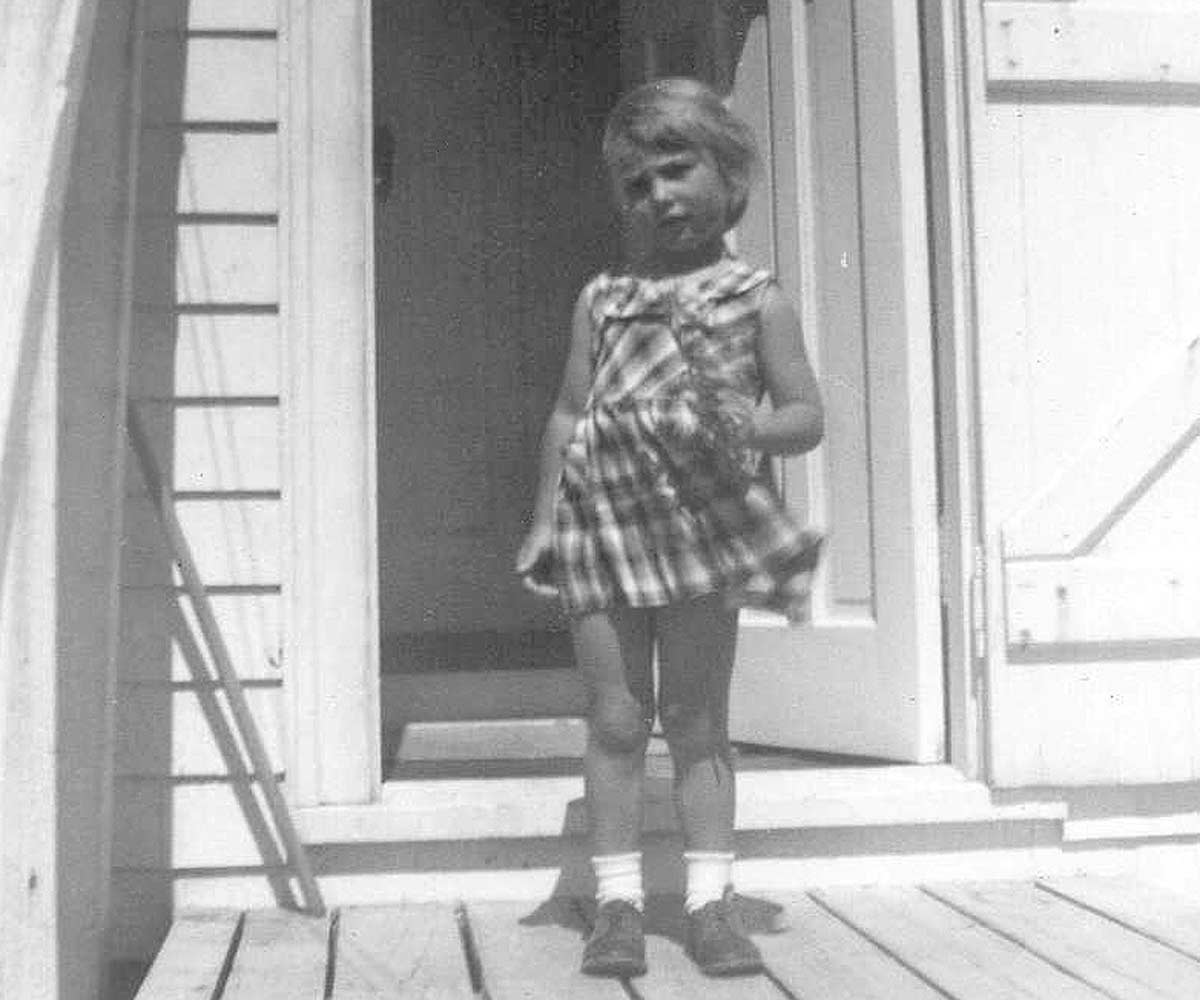 Cindy Clancey, four years old, standing on the doorstep of her home on Sable Island.
Cindy Clancey, four years old, standing on the doorstep of her home on Sable Island.
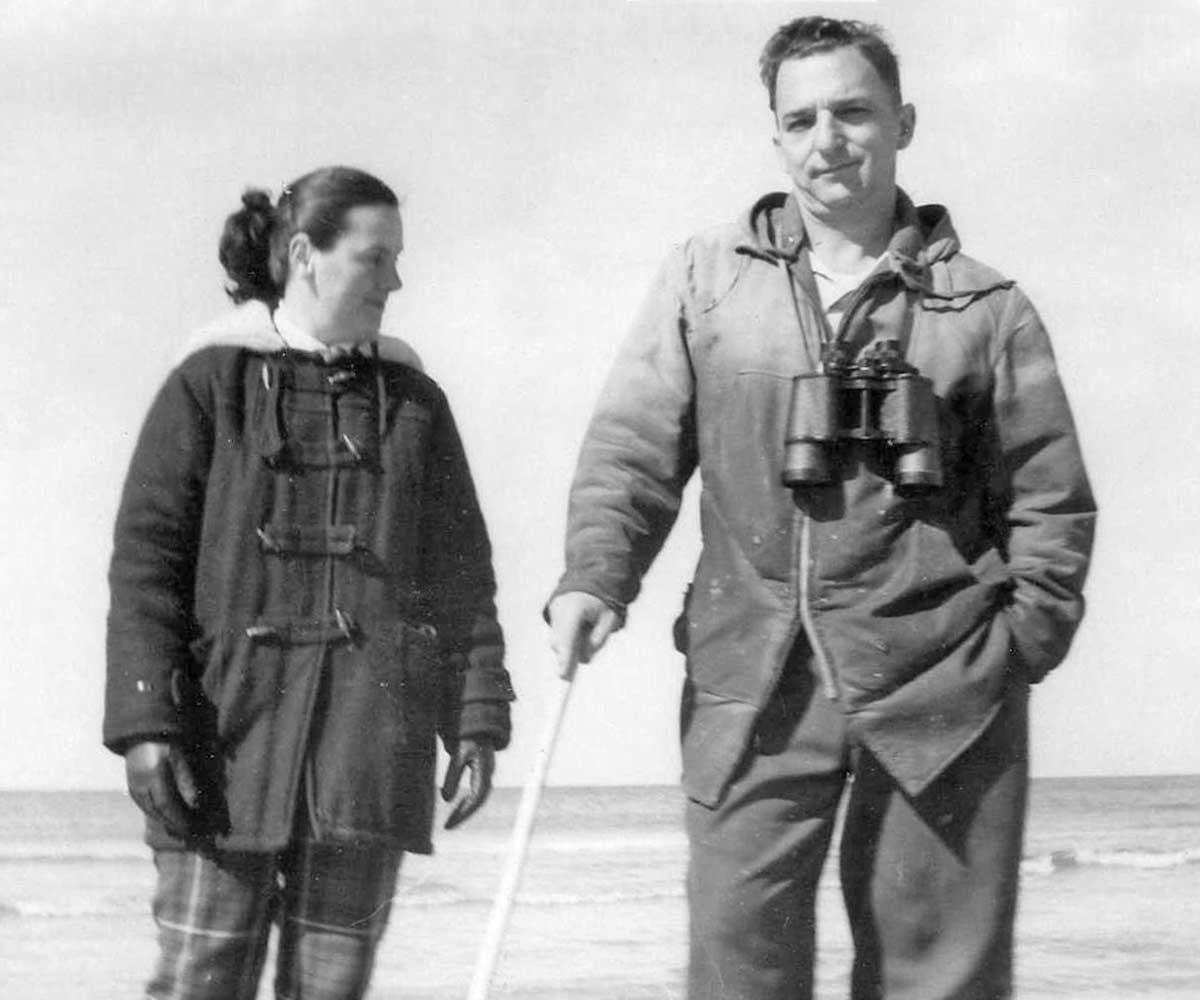 Cindy’s parents, Doris and Sid Forward on the beach.
Cindy’s parents, Doris and Sid Forward on the beach.
“We went for many walks on the beach, collecting shells and anything else of interest. Very strange things would not only wash up on shore but would be uncovered as the sands shifted—a WWII bomb, a campsite of some unfortunate soul, driftwood, remnants of wrecks and structures from the past, fish nets, glass buoys and bottles, carcasses of dead seals, birds, fish and, of course, garbage. Although the landscape was continually changing, some things never seem to change.”
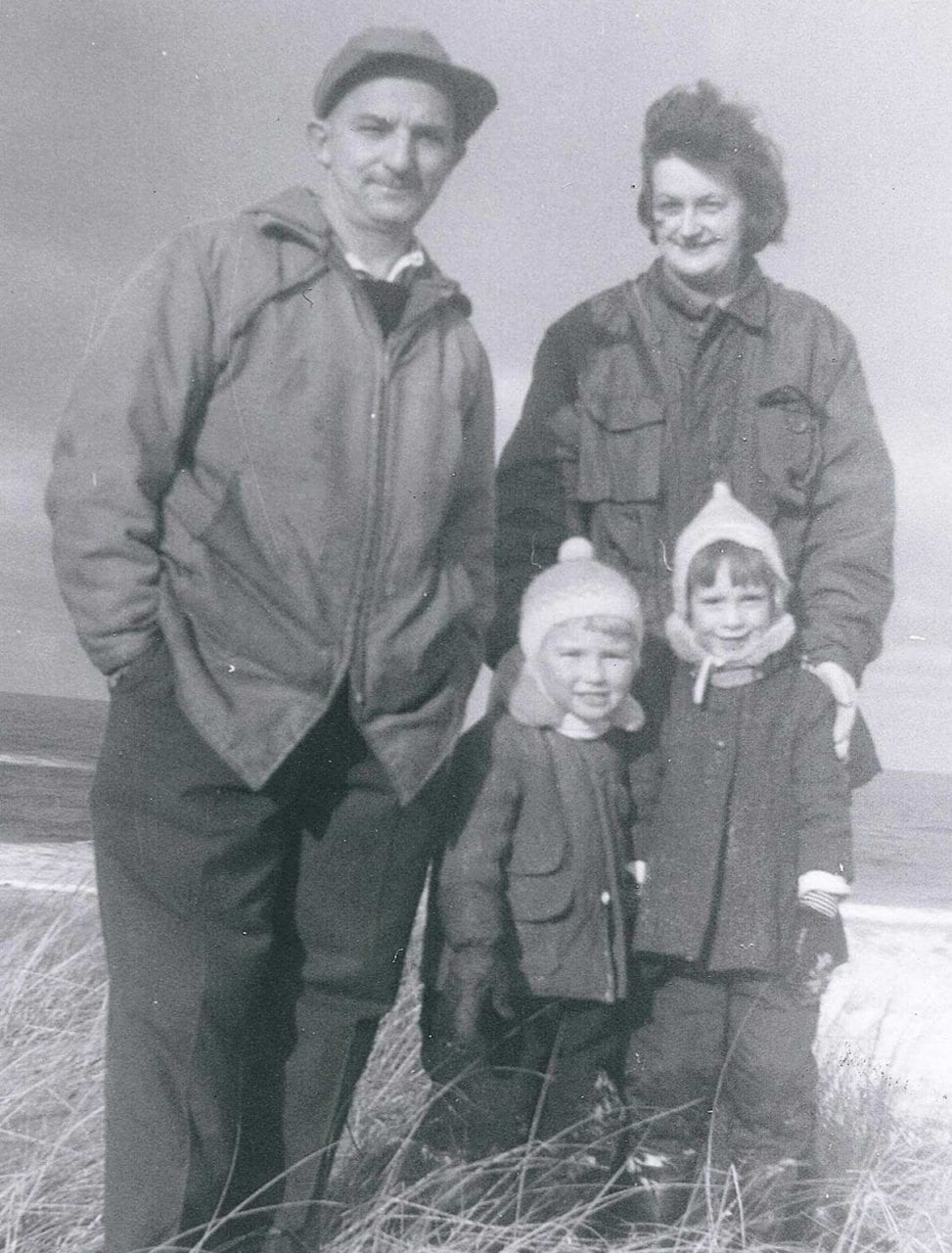 Cindy’s father Sid, Eleanor Androschuk, Cindy and her island friend Cathy.
Cindy’s father Sid, Eleanor Androschuk, Cindy and her island friend Cathy.
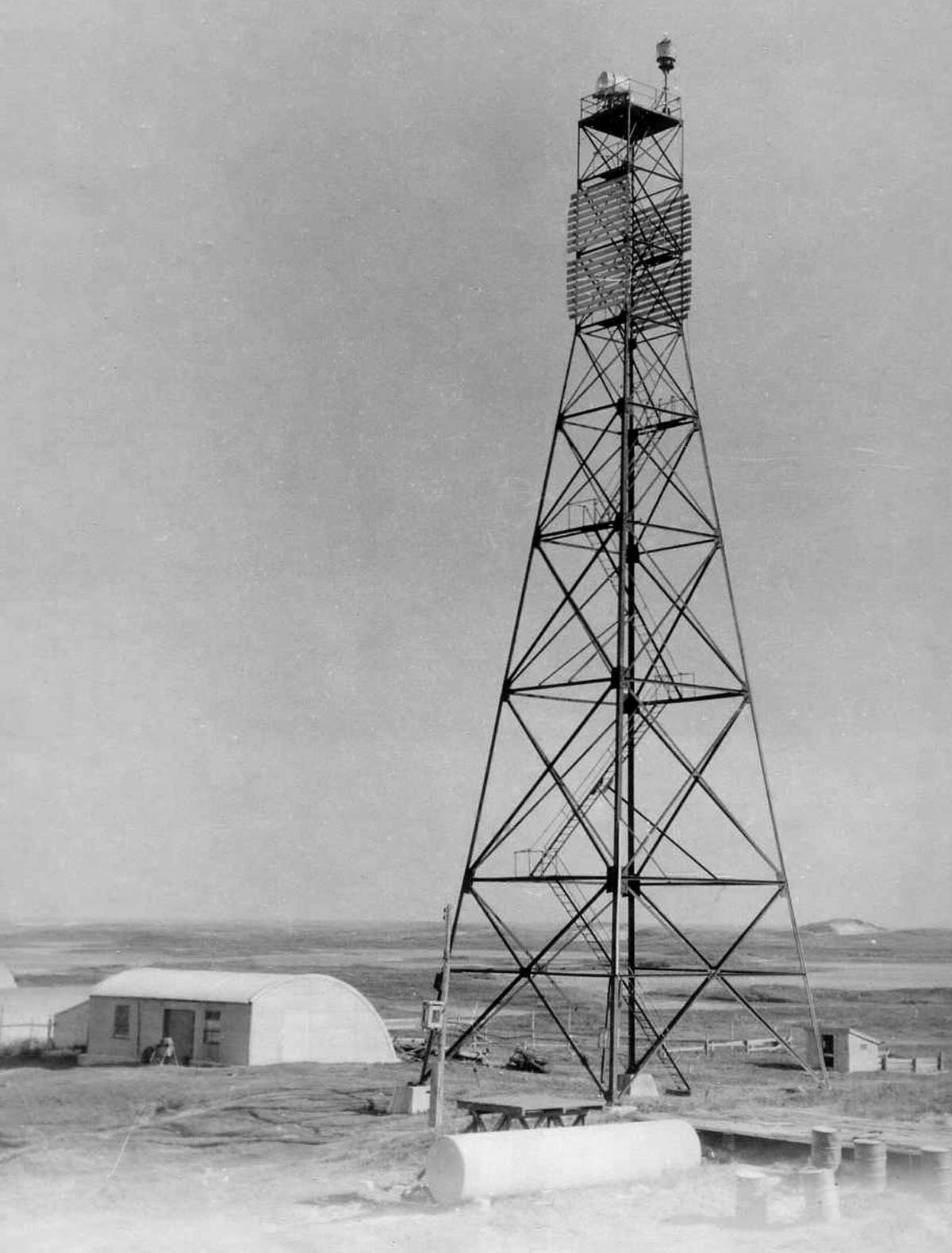 The West Light. “It stood 112 feet tall and the beacon flashed every 15 seconds. This was my father’s pride and joy. Apparently you could see the entire island from the top of the tower. I think that my father liked to climb it just so that he could see the view. One day he convinced my mother to join him. However, unlike Dad, my mother had a “healthy” fear of heights and couldn’t climb past the halfway mark. She had to be coaxed down. After that experience she was content to look at the pictures.”
The West Light. “It stood 112 feet tall and the beacon flashed every 15 seconds. This was my father’s pride and joy. Apparently you could see the entire island from the top of the tower. I think that my father liked to climb it just so that he could see the view. One day he convinced my mother to join him. However, unlike Dad, my mother had a “healthy” fear of heights and couldn’t climb past the halfway mark. She had to be coaxed down. After that experience she was content to look at the pictures.”
 “This is where we called home. As I look at this picture I see what appears to be the Old Main Station in the background, contrasted by this more modern station with all of its 1960’s technology. Yet in spite of the impressive towers, wires and wireless operations, this West Light was also destined to be decommissioned and replaced by even more modern technology. This picture represents a moment in time. This was the Sable Island that my family knew.”
“This is where we called home. As I look at this picture I see what appears to be the Old Main Station in the background, contrasted by this more modern station with all of its 1960’s technology. Yet in spite of the impressive towers, wires and wireless operations, this West Light was also destined to be decommissioned and replaced by even more modern technology. This picture represents a moment in time. This was the Sable Island that my family knew.”
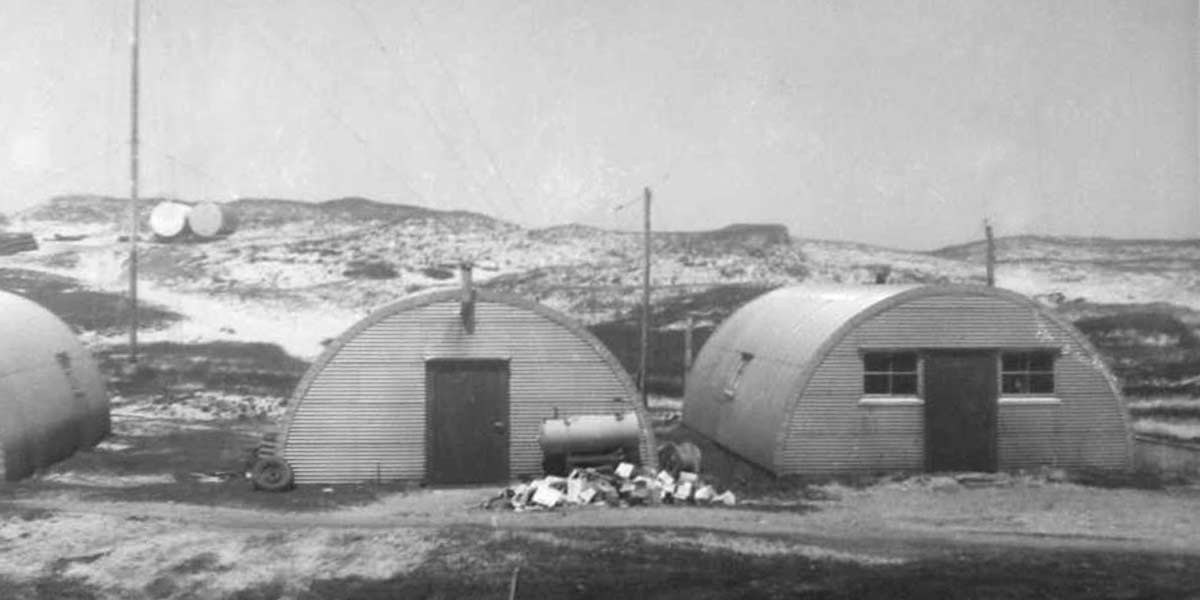 Quonset huts at West Light, used for storage. Cindy recalls the loss of Quonsets in severe weather: “…they were completely destroyed in a storm that passed through while we were living there. I vividly remember that night. The whole house shook, the windows rattled and the wind roared. The next morning the three Quonset huts were blown over with supplies scattered everywhere.”
Quonset huts at West Light, used for storage. Cindy recalls the loss of Quonsets in severe weather: “…they were completely destroyed in a storm that passed through while we were living there. I vividly remember that night. The whole house shook, the windows rattled and the wind roared. The next morning the three Quonset huts were blown over with supplies scattered everywhere.”
 The large Quonset hut at West Light. “This hut was used for storage and to house workers and visitors who would periodically come to the island. The hut was close to our house. Mom would often prepare meals for such guests. I recall that the hut was very large, hollow and a great place to hear your voice echo.”
The large Quonset hut at West Light. “This hut was used for storage and to house workers and visitors who would periodically come to the island. The hut was close to our house. Mom would often prepare meals for such guests. I recall that the hut was very large, hollow and a great place to hear your voice echo.”
 Mail delivery to West Light. While Cindy’s family lived on Sable Island, horses were harnessed for transportation.
Mail delivery to West Light. While Cindy’s family lived on Sable Island, horses were harnessed for transportation.
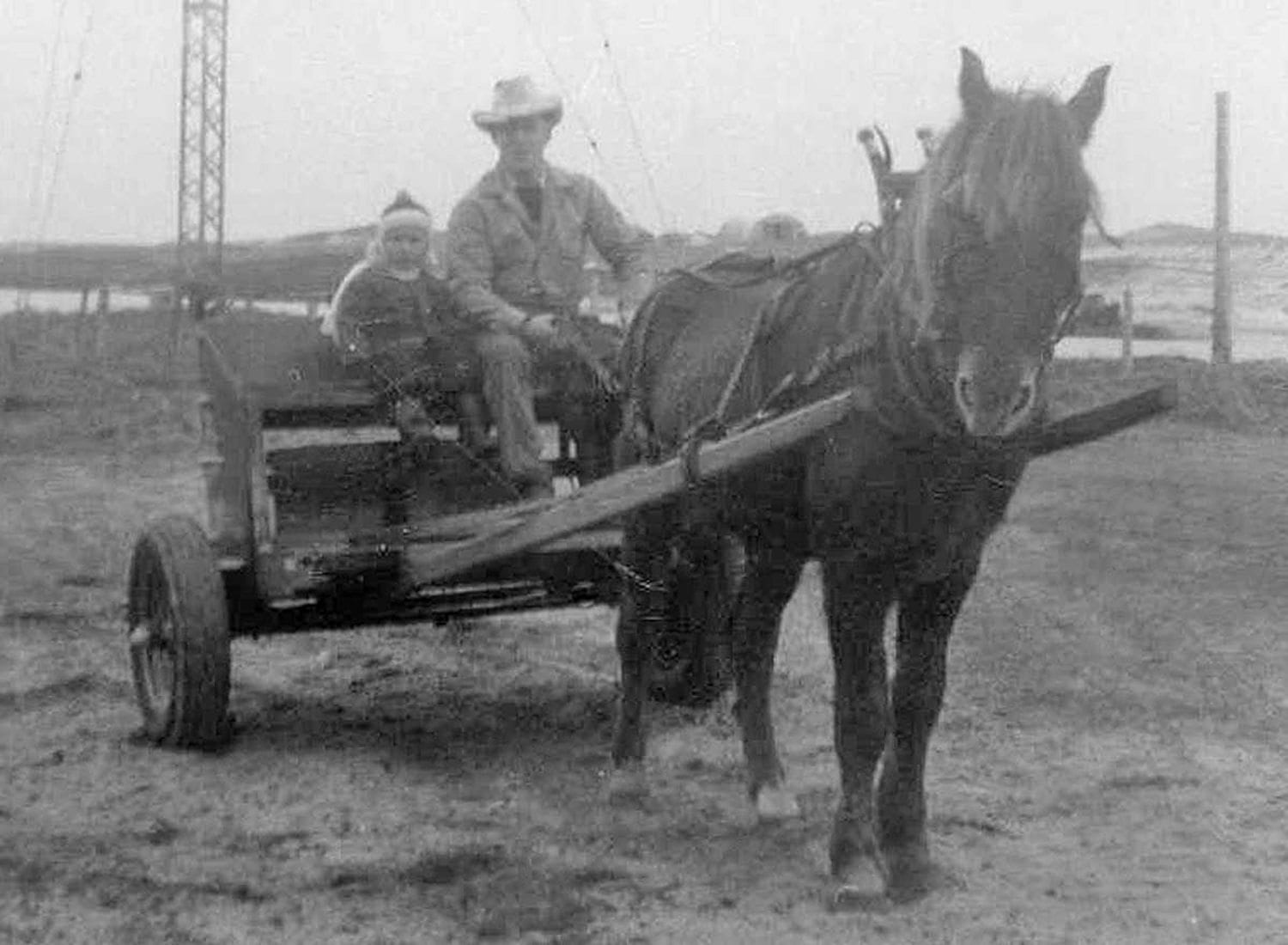 Cindy and an island resident travel by horse-and-buggy.
Cindy and an island resident travel by horse-and-buggy.
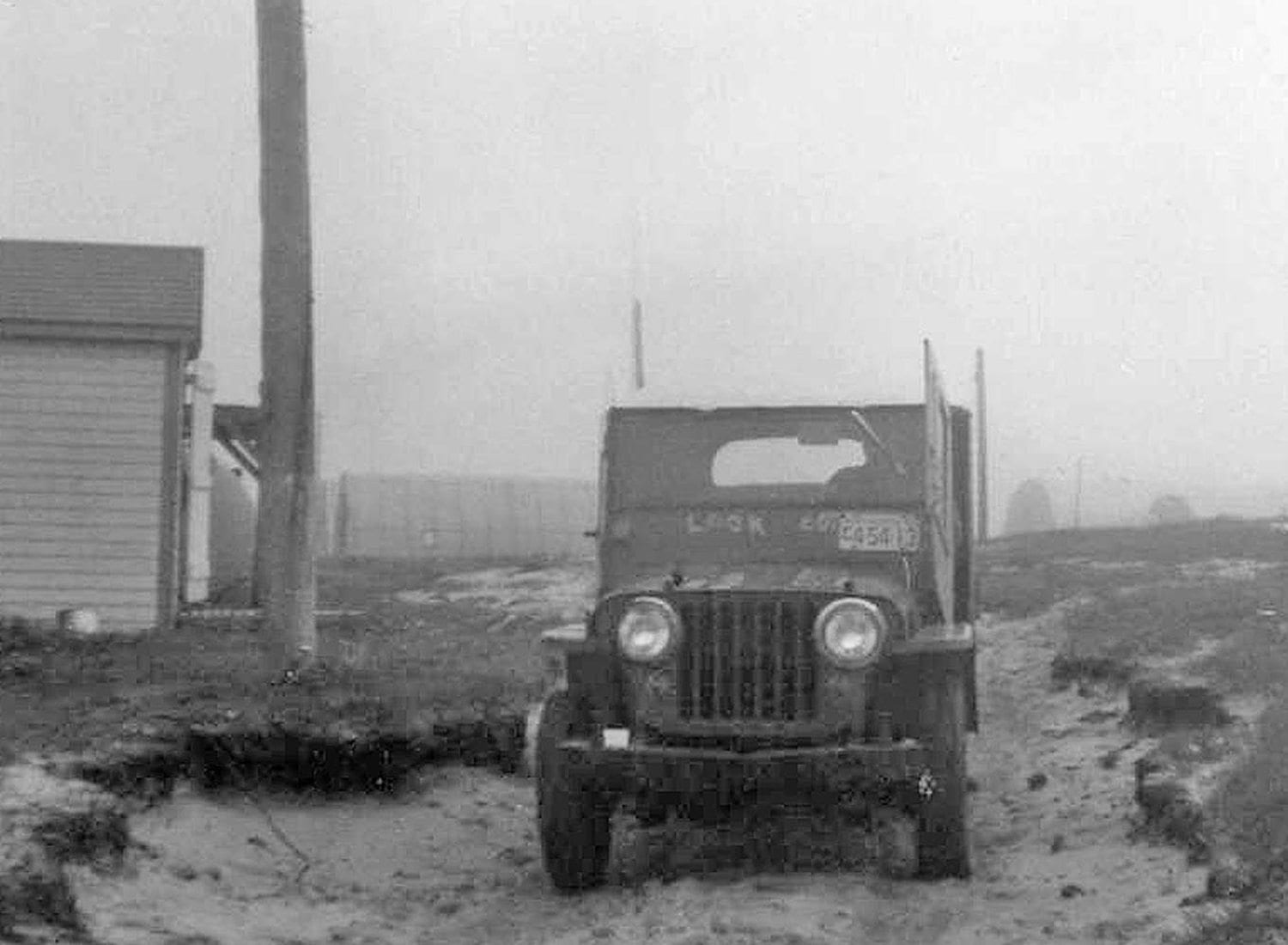 “My Dad’s jeep. Dad needed his own transportation to carry out his duties. This was the vehicle he used.”
“My Dad’s jeep. Dad needed his own transportation to carry out his duties. This was the vehicle he used.”
“It was quite a production to get it there. His brother Ross in Halifax made arrangements on Dad’s behalf to have the jeep transported to the island. I remember the day it arrived on the barge. Everyone was so excited. It was red with a grey wooden cap. It was noisy and uncomfortable. I don’t think that Mom appreciated it but Dad and I thought that it was great.”

“The Bombardier was the island’s primary source of transportation. It served many purposes including the transport of people and supplies. To hitch a ride, people would sit anywhere they could find a spot. No seatbelts on that vehicle! When there were several passengers a cart was attached. While once transporting several residents and guests up a dune, the cart became detached and everyone flew out. Fortunately no one was hurt.”
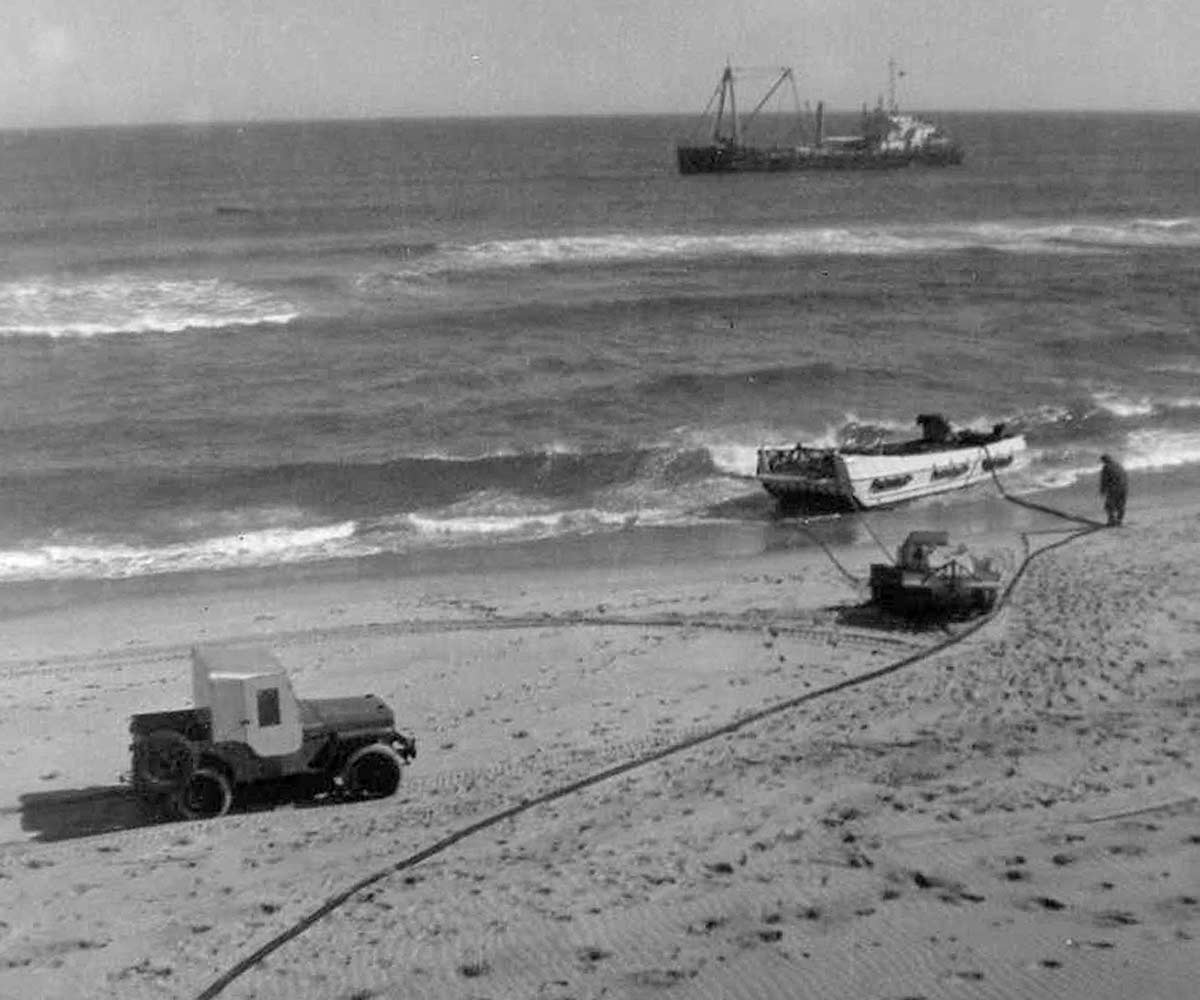 Oil was delivered by the ship’s barge and pumped through a hose to the storage tanks.
Oil was delivered by the ship’s barge and pumped through a hose to the storage tanks.
The arrival of the supply ship was much anticipated by island residents. “The entire community would come down to the beach to watch and help out. It was a familiar and welcomed sight. People and supplies arriving on board of barges were often tossed about, with the surf crashing and spraying. I can’t imagine how anything survived in one piece. The scene was always the same. The Bombardier and cart in tow would be there to transport guests or supplies. There might even be a horse or two, saddled or harnessed. Dad would be there with his jeep. As the men did the heavy work, the women and children would watch from the beach. There were lots of smiles and greetings. I guess island residents were so happy to see something or someone new.”
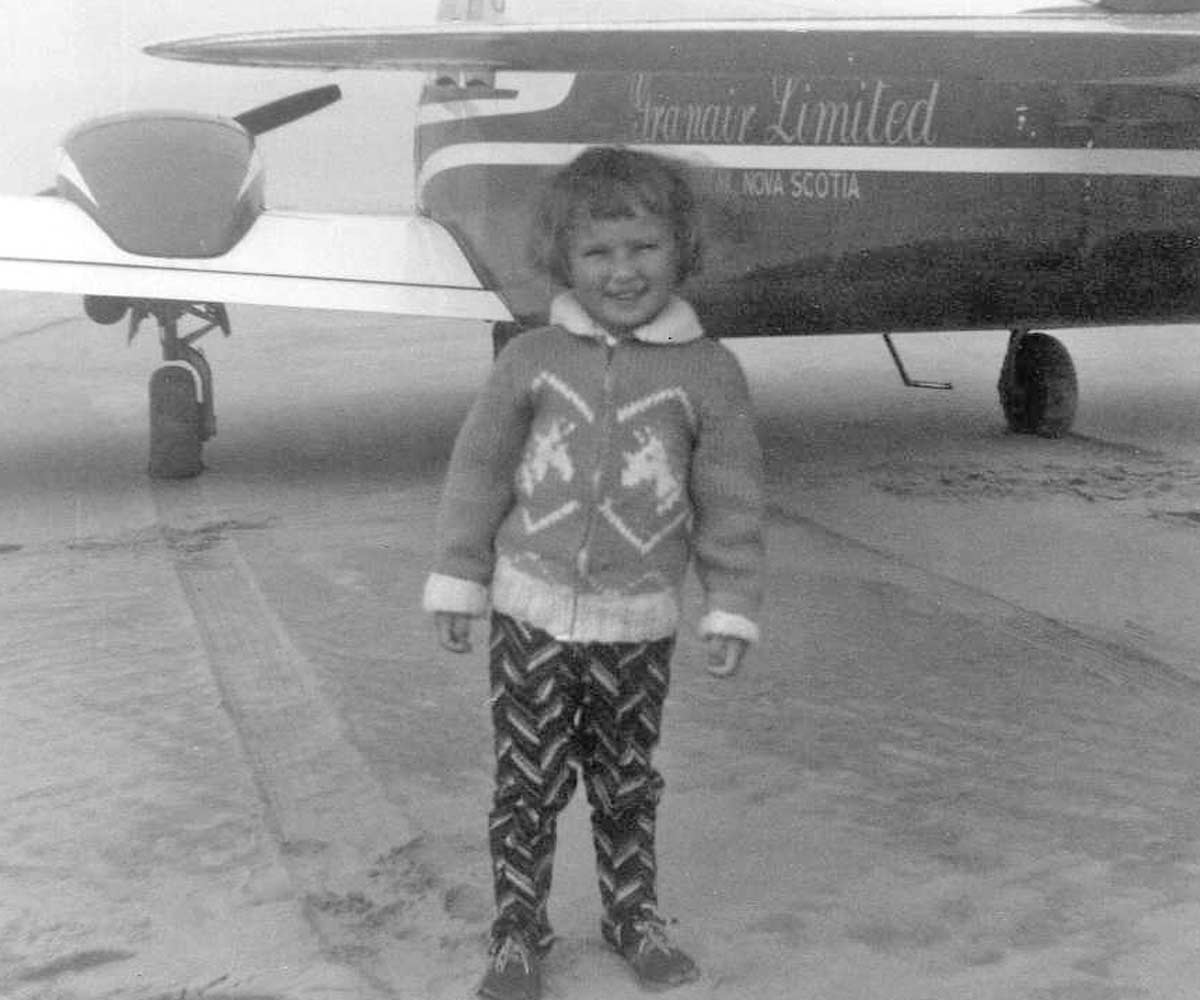 Cindy standing in front of a charter aircraft.
Cindy standing in front of a charter aircraft.
In the early 1960s, air travel to Sable was infrequent and there were no scheduled supply flights. Preparation for a flight was much the same as it is today. “I remember my father talking about how they prepared for the arrival of a plane by first checking the sand for soft spots and then marking the landing strip.”
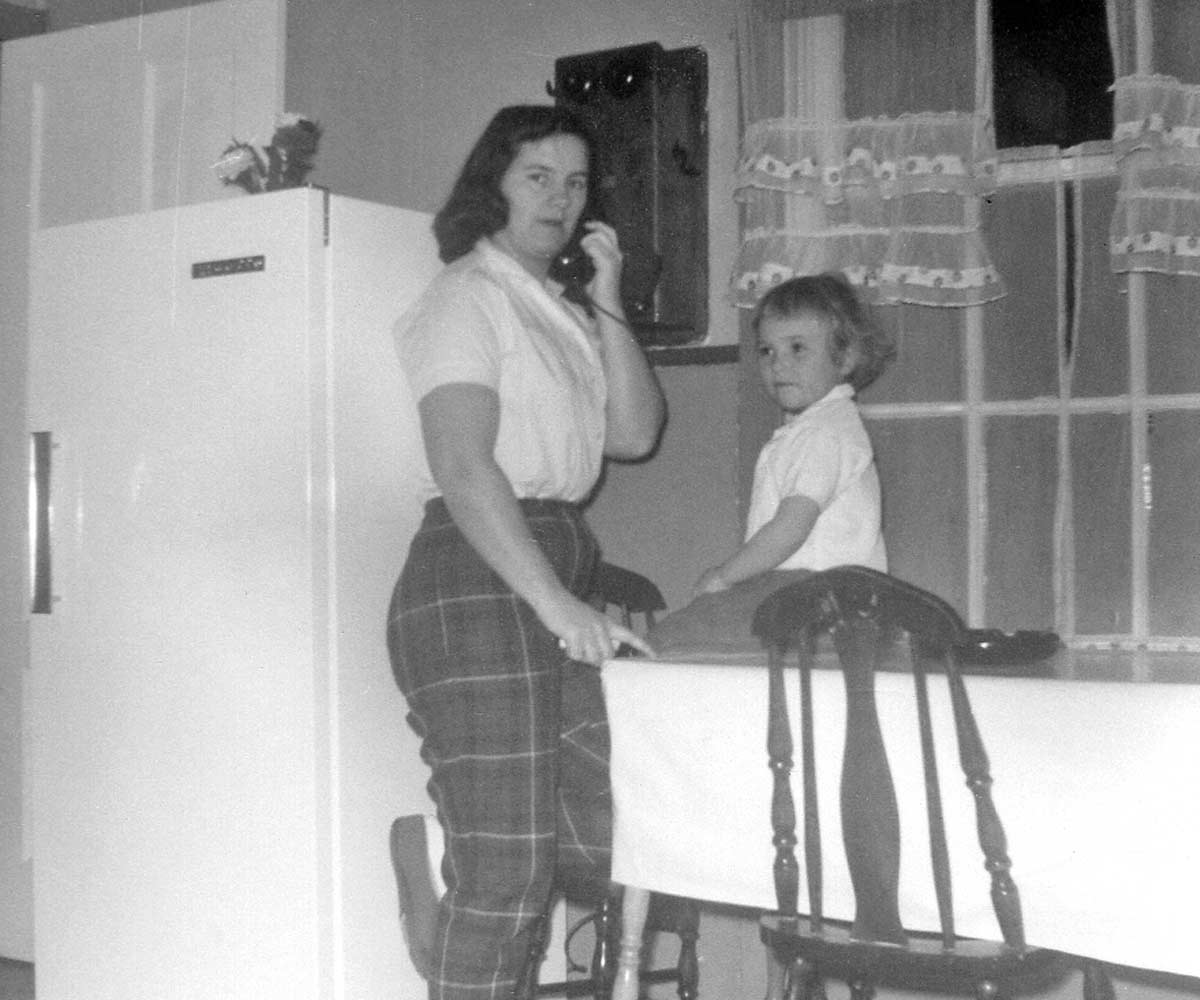 Cindy and her mother Doris using the old crank telephone in the kitchen. Their home on Sable still stands. Now called the “BIO House”, it is the field research building for scientists from Fisheries & Oceans Canada, based at the Bedford Institute of Oceanography in Dartmouth, Nova Scotia.
Cindy and her mother Doris using the old crank telephone in the kitchen. Their home on Sable still stands. Now called the “BIO House”, it is the field research building for scientists from Fisheries & Oceans Canada, based at the Bedford Institute of Oceanography in Dartmouth, Nova Scotia.
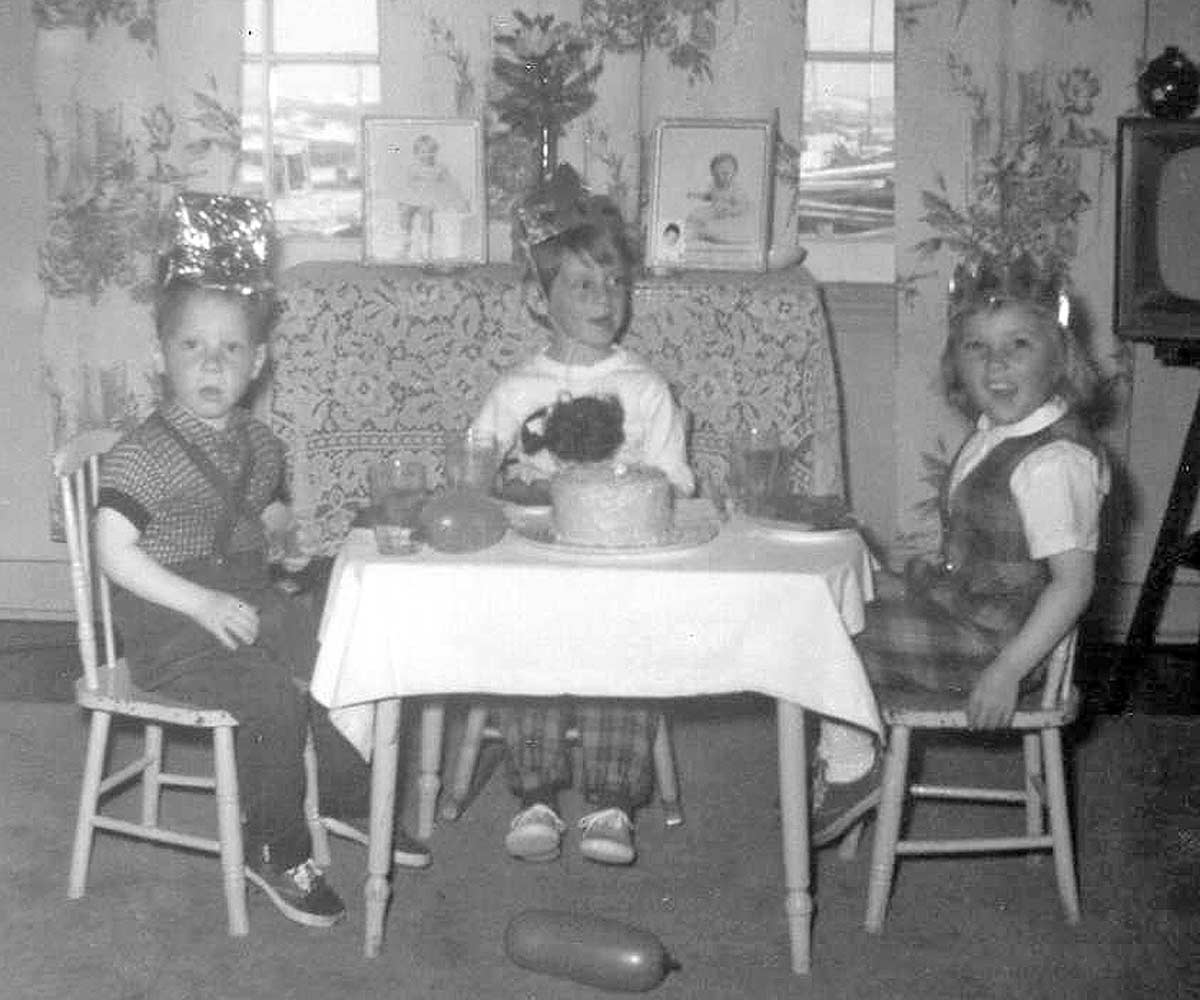 Cindy celebrating her fourth birthday with her Sable friends Cathy and Johnny. “Mom made hats out of newspapers and tinfoil. We played games and ate cake just like kids on the mainland. Our mothers made a special effort to ensure that our lives were normal. Mom taught me to play games and do all the popular things that other kids did so that when we returned to the mainland the transition would be easier.”
Cindy celebrating her fourth birthday with her Sable friends Cathy and Johnny. “Mom made hats out of newspapers and tinfoil. We played games and ate cake just like kids on the mainland. Our mothers made a special effort to ensure that our lives were normal. Mom taught me to play games and do all the popular things that other kids did so that when we returned to the mainland the transition would be easier.”
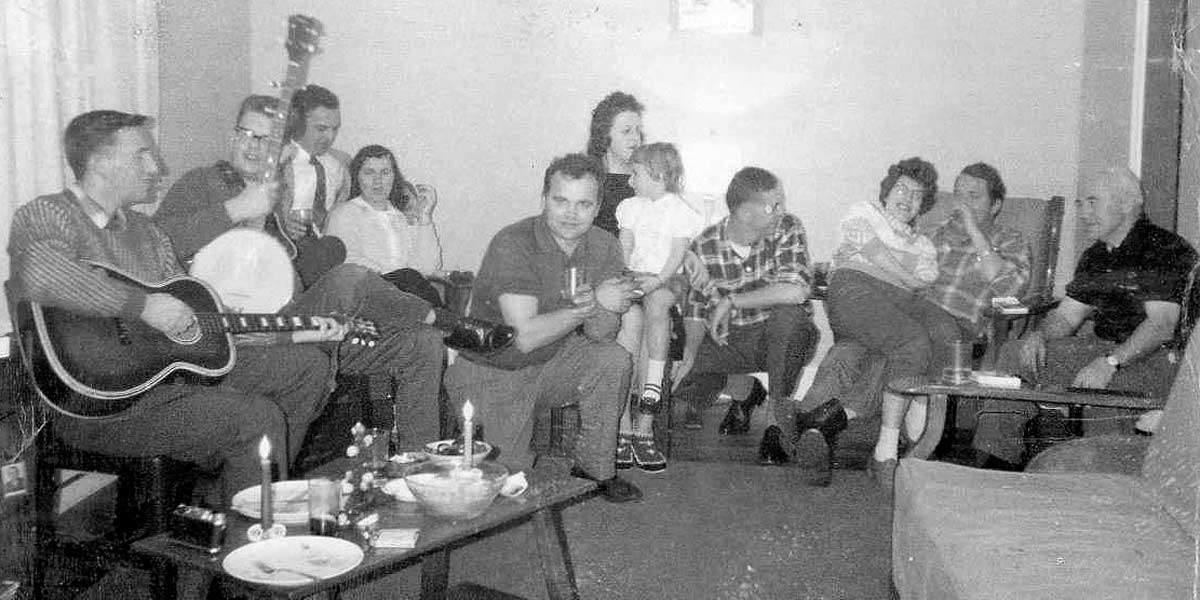 “Christmas celebration at the main station. My parents are seated in the upper left corner. Fred Androschuck is in the center. I am sitting on Eleanor Androschuk’s lap.”
“Christmas celebration at the main station. My parents are seated in the upper left corner. Fred Androschuck is in the center. I am sitting on Eleanor Androschuk’s lap.”
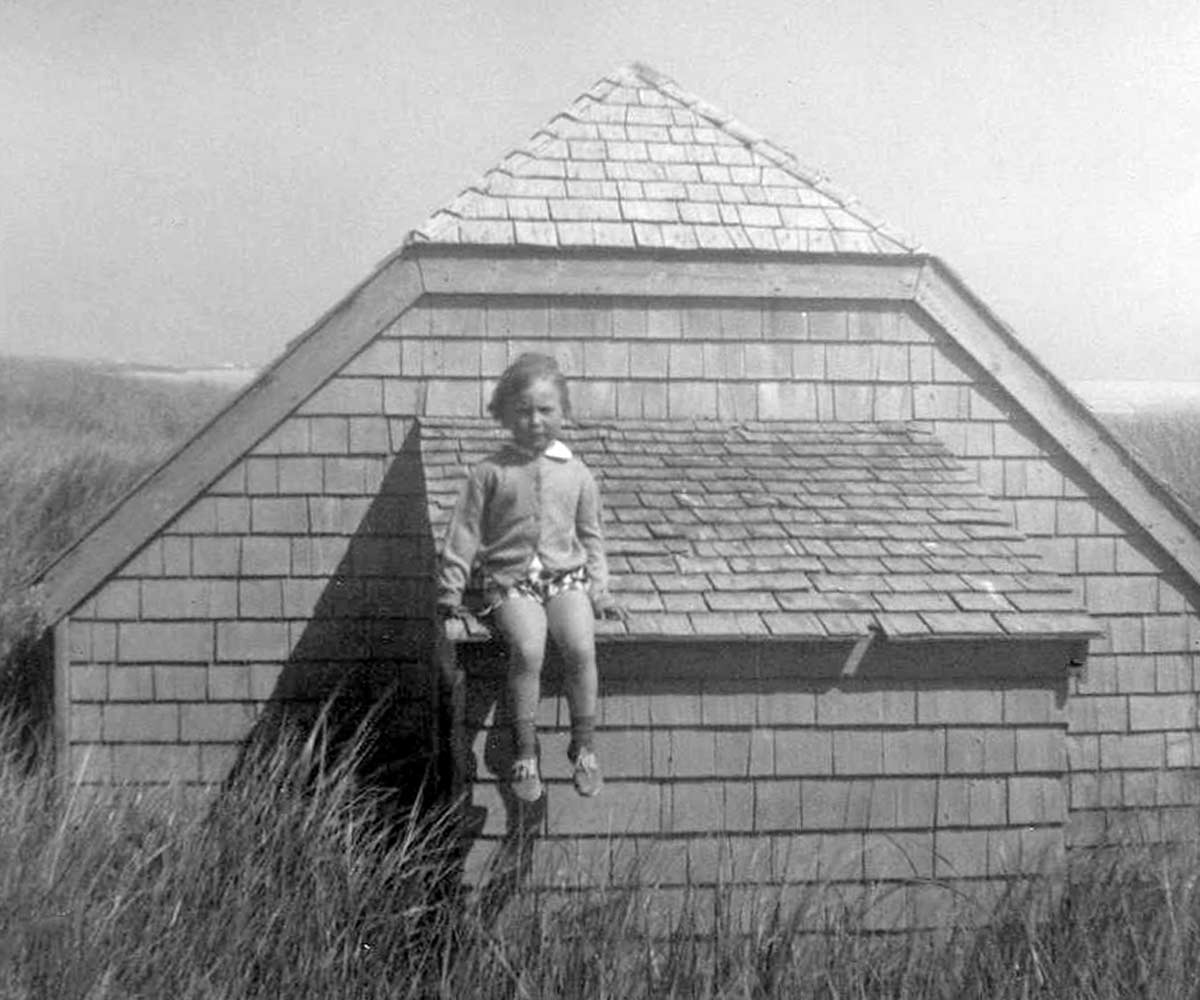 A breezy summer day on Sable Island. Cindy sitting on the porch roof of a half-buried building.
A breezy summer day on Sable Island. Cindy sitting on the porch roof of a half-buried building.
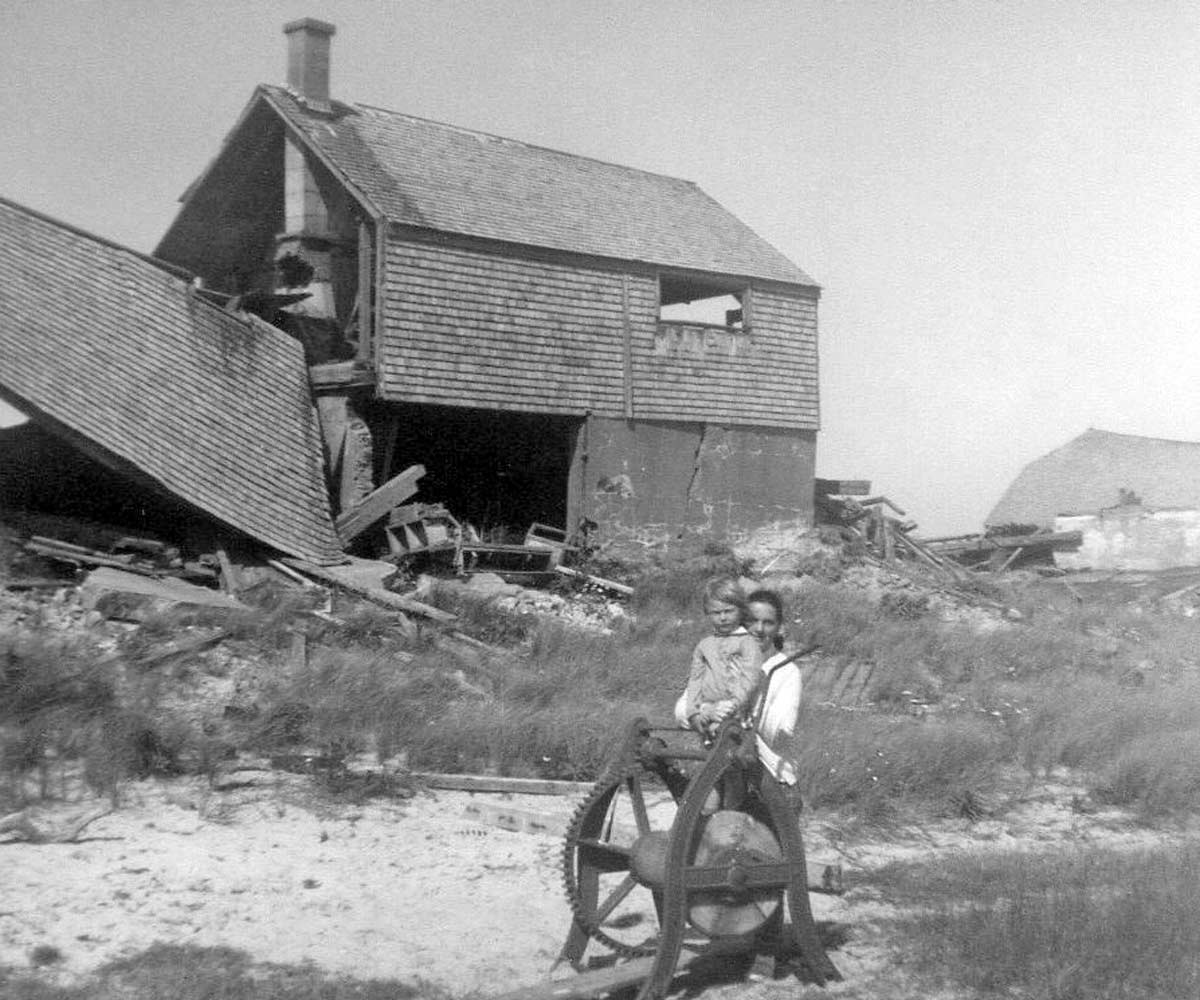 Cindy and her mother Doris exploring the ruins of buildings at the old Main Station.
Cindy and her mother Doris exploring the ruins of buildings at the old Main Station.
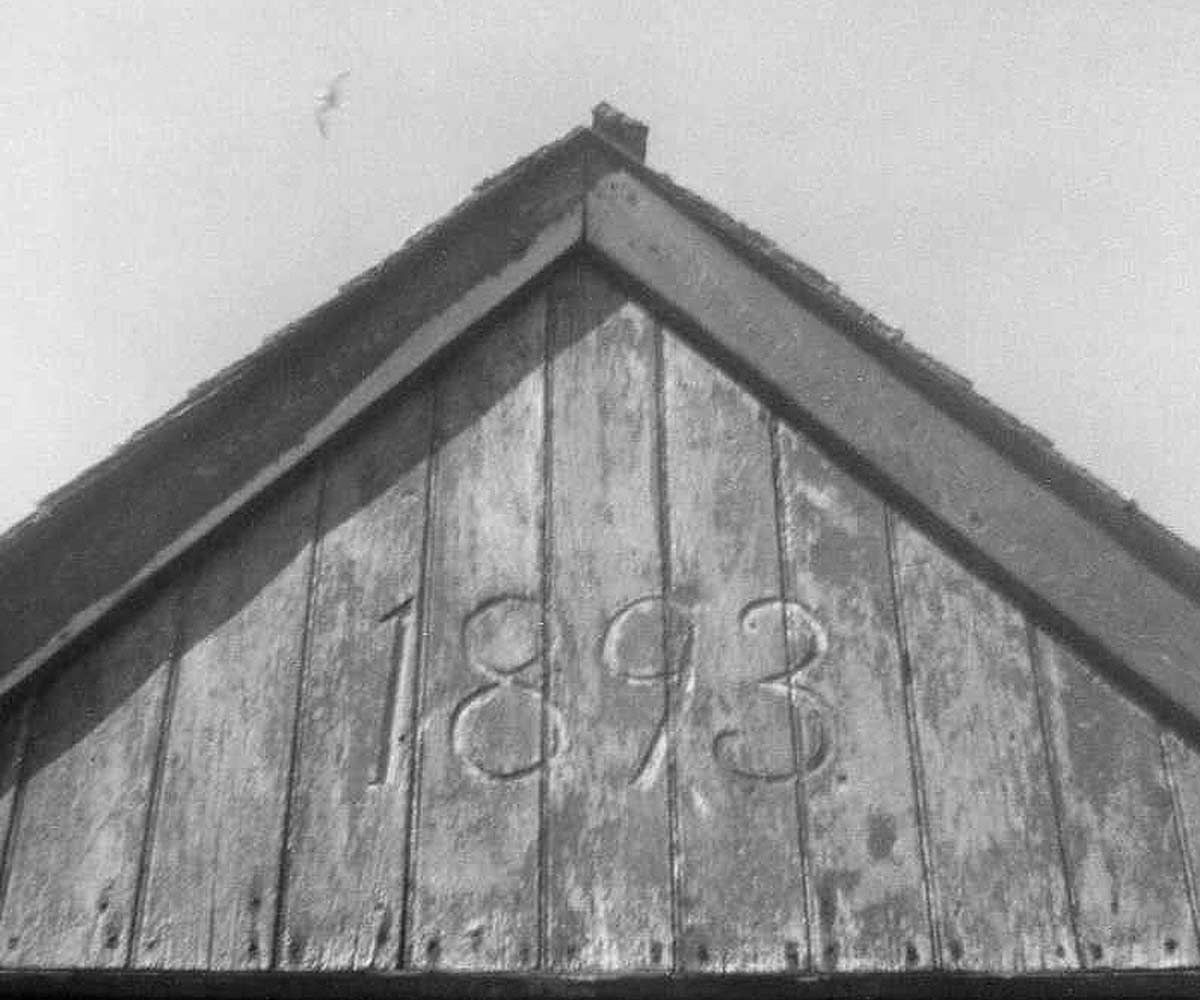 In 1962 Cindy’s father took this photo of a building constructed in 1893, now long gone.
In 1962 Cindy’s father took this photo of a building constructed in 1893, now long gone.
Prepared by Cindy Clancey
for the Friends of the Green Horse Society, 2006
All photos provided by the family of Sid Forward
!!!<><><>!!!<><><>!!!<><><>!!!
In summer 2008, Cindy Clancey returned to Sable Island for a day-visit. Cindy and her travelling companion, artist Susan Tooke, met Zoe Lucas on the island, and together they spent the day exploring the landscape and structures of Cindy’s childhood in the areas of West Light and the Old Main Station.
!!!<><><>!!!<><><>!!!<><><>!!!



8 Responses
What a fabulous story about living on Sable Island through the eyes and photos shared by Cindy! And how she visited in 2008 with Susan and Zoe!
Thanks for sharing!
What a gift! Thanks to Cindy for the remarkable glimpse into a time gone by.
I so enjoyed this first hand account of life on sable years ago through the eyes of a child. What an idyllic place to grow up! So glad you got to return to this magical place and relive long ago adventures, It must have triggered so many memories. Thanks for sharing!
I first saw Sable when I was coming back from Iceland and saw it out of the window of the plane, thinking, ‘What in the world is that!’ So I read the Villiers & Hirtle book, and Randall’s novel to get a more personal glimpse of life on the island, which was fascinating. But this was also a treat. Thanks for your photos and memories.
Thank you for sharing your lovely memories of Sable Island Cindy. It was a walk down memory lane for me, as well, as I was reading your story. I spent much of my time sitting on the same doorstep 🙂 as our family was the previous occupants of your Sable Island home. My dad Art Dooks was the Superintendent of Sable Island for 5 years. Wondering if you recall the names of two other horses, Colonial and Raywind? Thanks again ❤️
Hello Valerie . Thank you so much for responding . Our fathers knew each other ! I think we moved to the island after your family returned and The Bells replaced us . I can remember sometime after we returned to the mainland Dad actually took us to visit your family at your home and we met two horses . Could they possibly have been Colonial and Raywind ?
Thanks for sharing Cindy. I remember the old films your parents would show us when they came to visit.
Lynn Stewart
My name is David Purdy I to have many pictures of the island as well my question is did u know or hear of a man named Jerry Purdy